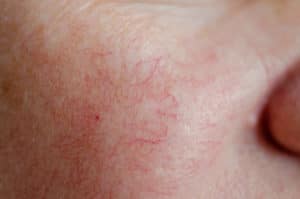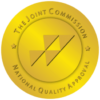Originally used as comic relief and to warn viewers that a character’s actions may range from being mildly funny to outrightly ludicrous, drinker’s nose, or alcoholic nose, is actually indicative of a more serious chronic condition.
Generally accepted as a sign that a person has hit the drink, and perhaps in amounts that are more than they should have, the discoloration of a person’s nose that turns it into a shade of red or purple could be indicative of the advancement of the condition called rosacea.
The advanced condition is termed rhinophyma and typically affects Caucasian males aged anywhere from 50 to 70. It manifests as thickened and reddened skin, mostly around the area of the nose, although it has been known to extend to the forehead, cheeks, ears, eyelids, and the chin.
In some cases this condition could also include pitting and scarring of the skin. The truth of the matter is that this condition has not been conclusively proven to be the result of excessive alcohol use, and could have only been mistakenly associated with it because of the facial reddening or flushing that occurs to some people when they have a drink.
Jump to Section
How Different Is Rhinophyma From Rosacea?
 Rosacea is a skin condition that is quite common and is characterized by a pronounced “blush” or flushing of the face. In some cases, it could even cause small, puss-filled bumps to appear, which many mistake for acne.
Rosacea is a skin condition that is quite common and is characterized by a pronounced “blush” or flushing of the face. In some cases, it could even cause small, puss-filled bumps to appear, which many mistake for acne.
Some cases even cause small blood vessels on the nose and cheeks to become visible. This condition also comes with a bit of discomfort and even pain, the most common examples being dry, irritated, and swollen eyes and eyelids, with the skin on the affected area feeling hot and tender.
Perhaps the most prominent indicator of this condition is the enlarged nose depicted in classic cartoons, although this is a more advanced stage of this condition.
Rosacea has no known cure, although there are treatments today that could help reduce the visible signs of it.
Although there is still some debate on it, rhinophyma is believed by many to be the advanced stage of rosacea. This is mostly focused on the enlarging of the nose, making it appear to be red, bulbous, and to a certain extent, bumpy in texture.
Medical professionals, however, do agree that this condition is not influenced by heavy alcohol intake, as there are also cases of non-drinkers developing the condition.
Studies into this chronic skin condition indicate that untreated rosacea could increase the chances of developing rhinophyma, with some cases causing nasal obstruction and the forming of a large mass on the lower half of the nose.
What causes rosacea and rhinophyma?
Rhiniphyma is believed to be a severe subtype of rosacea, but the root cause of rosacea remains unknown to this day. Some researchers believe that it could be related to an immune system disorder, while others are looking at hereditary factors and determiners. Others still, are trying to determine if environmental influences have anything to do with the condition.
So far, what is known about rosacea is that it is prone to flare up in people, with the flare-ups being triggered by the following:
- Cosmetics or hair care products
- Temperature extremes
- Exposure to sun or wind
- Alcoholic beverages
- Spicy foods
- Surges of emotion
- Medications that dilate blood vessels, such as blood pressure regulators
Rhinophyma comes with symptoms that are somewhat more severe than rosacea. These symptoms are mostly centered around the nose and middle part of the face.
- Progressive swelling of nose to a bulbous shape
- Visibly pronounced oil glands
- Pronounced and enlarged pores
- Discoloration of the nose, ranging from reddish, purplish, or yellowish
- Thickened, rough, and waxy skin texture of the nose
Why Does Alcohol Make Your Nose Red?
The association of the nose becoming red as a sign of intoxication is somewhat misleading in that it is actually the entire face that gets discolored due to alcohol. This misconception has led to the popular question of why does alcohol make your nose red, and also caused the stigma that people with rosacea are alcoholics.
Despite how much people enjoy imbibing it, alcohol is actually toxic to the cells in the blood vessels. When these cells are exposed to alcohol, they dilate, causing the skin to turn red or to become “flushed”.
The reddening, however, is the least concerning manifestation of alcohol toxicity in the body. AS alcohol is a cellular toxin, the cells of the body parts most exposed to alcohol, such as those found in the mouth and throat, tend to be more vulnerable to the toxic effects.
Alcohol Toxicity
The buildup of alcohol toxicity over time creates enough cellular damage in these areas to allow cancer to form, specifically oral and esophageal cancer. This also puts the cells in the other connected organs at risk of developing cancer as well, particularly in the liver, digestive system, and respiratory system.
As alcohol is a toxin, facial flushing is just the beginning of the “warning signs” the body is giving out to signify that the alcohol is toxic to it. Following the reddening of the face, several other symptoms follow, including:
- Headache
- Nausea
- Vomiting
- Increased heart rate
- Diminished motor control
- Diminished rationality and logical thought
- Poor judgment and increased risk-taking
- Slurred speech
- Blurred vision
- Loss of balance
- Dizziness
- Blacking out
A study done in 2013 in Korea on associated illnesses with alcohol consumption states that facial flushing is indicative of an increased sensitivity to alcohol. The study also pointed out that facial flushing also served as a strong indicator that continued alcohol intake could increase the risk of hypertension.
Does Alcohol Intake Cause Rosacea?
Despite all the depictions of inebriation, where a red-faced person suffering from hiccups and displays of drunken behavior stumble around, all studies done on the condition revealed that alcohol intake will not cause a person to have rosacea.
The facial reddening is due to the flushing effect caused by cells in the blood vessels reacting to alcohol toxicity, and not because of rosacea. A study published in the Journal of the American Academy of Dermatology, however, points to a possible link between alcohol intake and increased risk of developing rosacea in women.
The study did not give any conclusive or concrete correlation between alcohol intake and development of rosacea as further research into it was still needed. The study did manage to establish a few base findings:
- People don’t get rosacea from alcohol
- Rosacea is not an indicator that a person is into alcohol abuse
- Even non-drinkers could get rosacea
Are There Treatments for Alcoholic Nose?


Medication
Physicians might prescribe antibiotics to prevent the proliferation of bumps and pimples, and for severe cases, oral acne medications to help deal with the facial lesions.
Laser therapy
There are dermatological laser treatments that help minimize or even eliminate scarring that could also be used to diminish the enlarged blood vessels made visible by rosacea. This kind of treatment, however, could be needed on a regular basis to maintain the appearance of normal skin.
The treatment for the facial flushing brought on by alcohol intake, however, involves having to stop drinking alcoholic beverages. Should the alcohol dependency be something that requires help, then an intervention might be needed to facilitate detoxification, and then rehabilitation later on.
The rehabilitation may be followed by support group therapy to help in maintaining sobriety and to ensure that recovery is indeed complete.
Find Help With Northern Illinois Recovery
If you are dealing with issues involving alcohol or other substances, Northern Illinois can help. Addiction is a serious disease and often requires extensive treatment. The time is now. Give us a call today if you have any questions about receiving treatment.


Licensed Physician and Surgeon
Dr. Beth Dunlap, a board-certified addiction medicine and family medicine physician, and is the medical director at Northern Illinois Recovery Center. She is responsible for overseeing all the integrated medical services at both campuses. Beth completed medical school, residency, and fellowship at Northwestern University, where she continues to serve on the faculty as a member of the Department of Family and Community Medicine. She has extensive experience in addiction medicine at all levels of care, and her clinical interests include integrated primary care and addiction medicine, harm reduction, and medication-assisted treatment.



